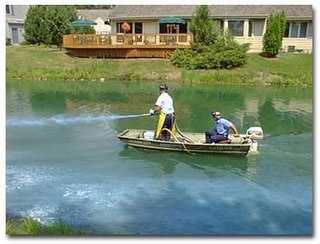Algicide
Algaecide or algicide is a biocide used for killing and preventing the growth of algae, often defined in a loose sense that, beyond the biological definition, also includes cyanobacteria ("blue-green algae").[1] An algaecide may be used for controlled bodies of water (reservoirs, golf ponds, swimming pools), but may also be used on land for locations such as turfgrass.[2]

This article needs attention from an expert in Chemicals. Please add a reason or a talk parameter to this template to explain the issue with the article. (January 2024) |